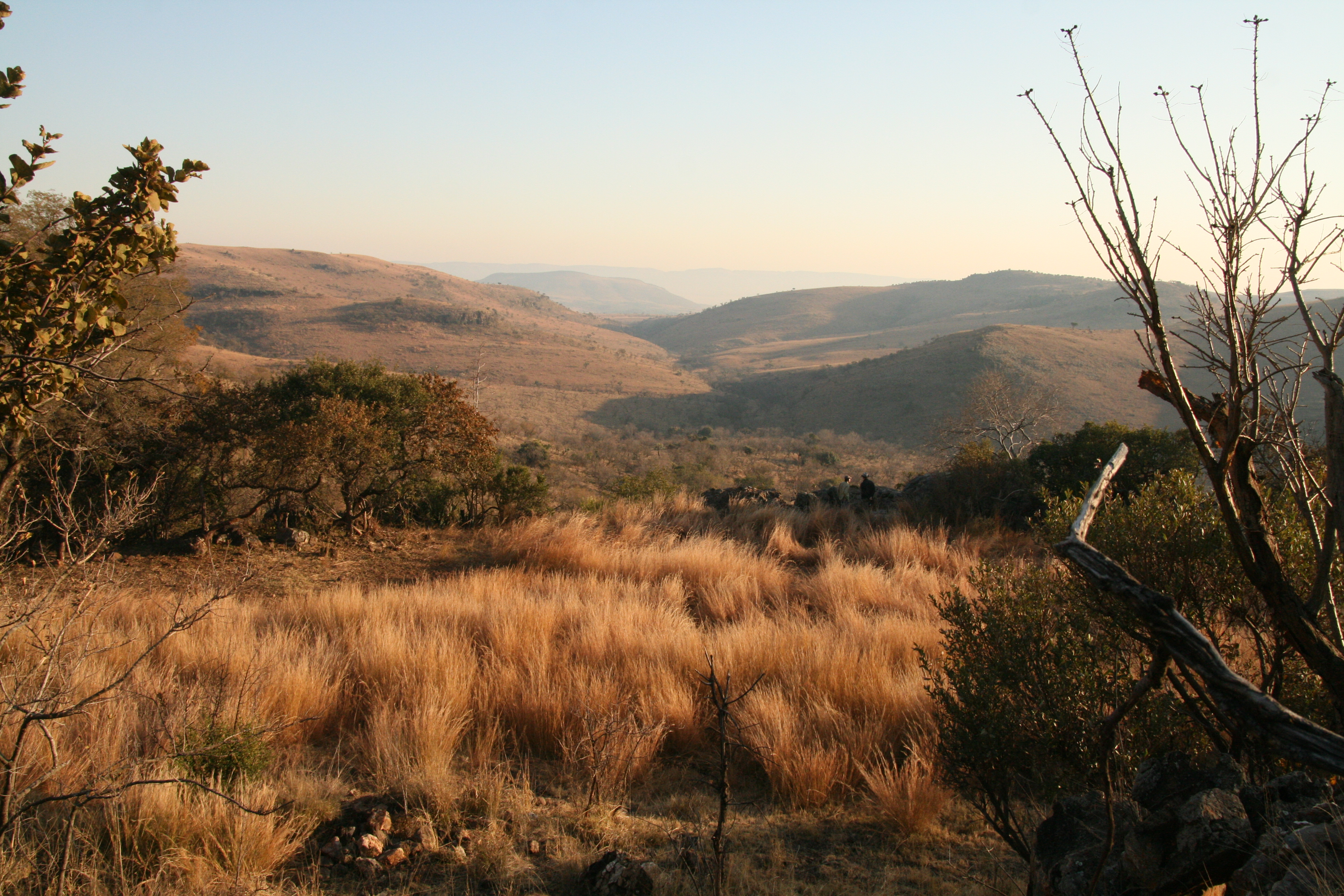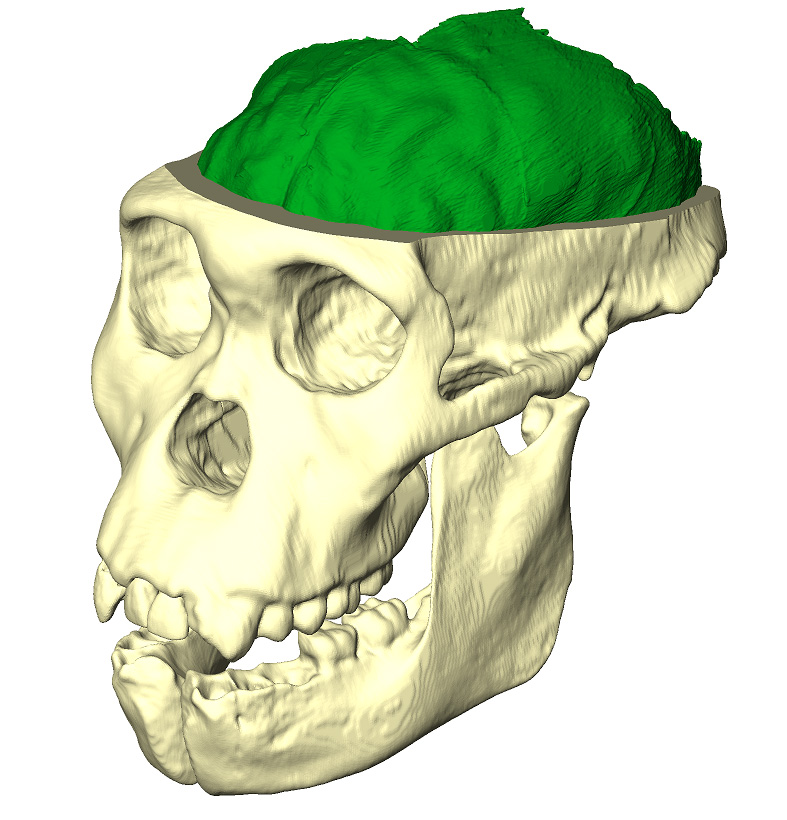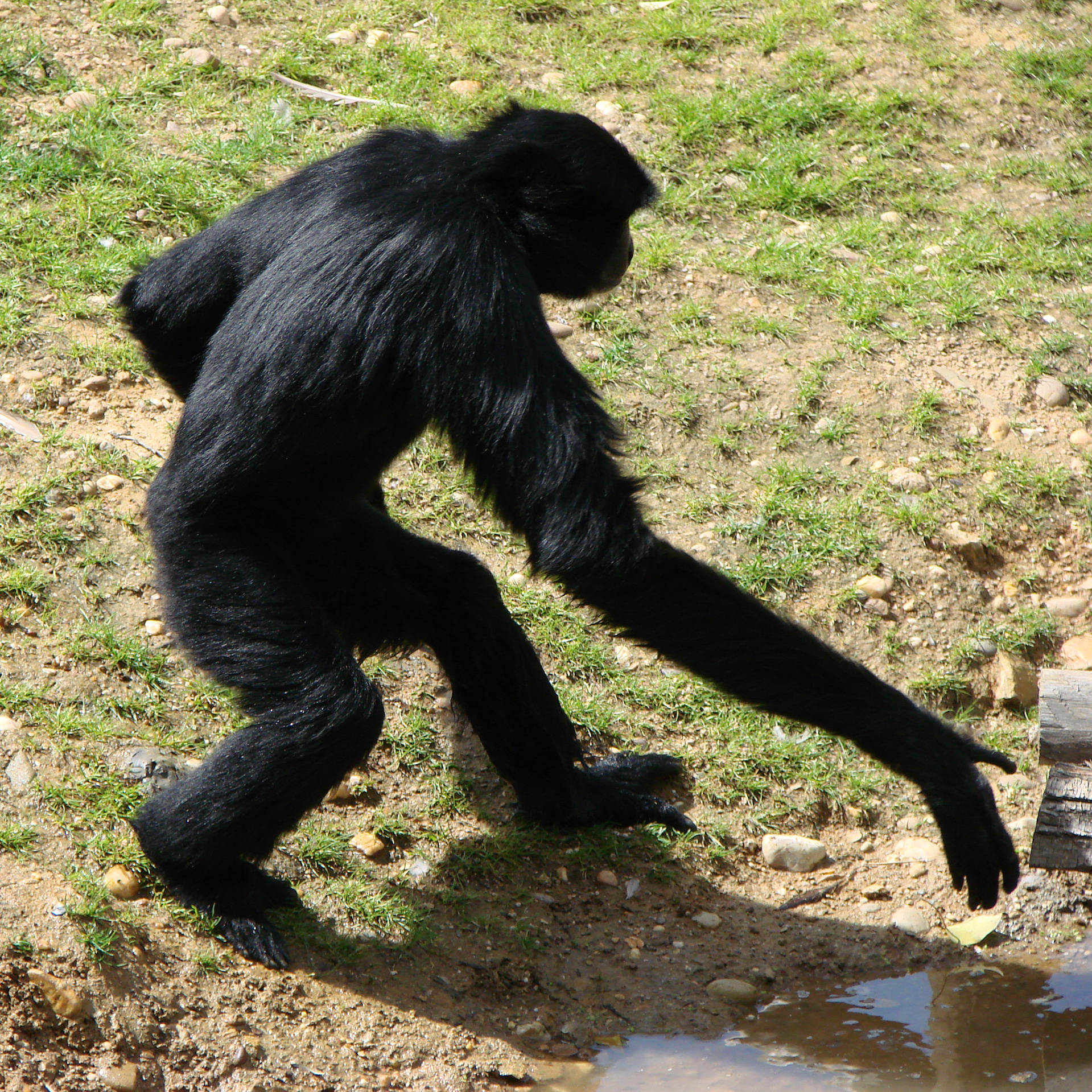|
Malapa
Malapa is a fossil-bearing cave located about northeast of the well known South African hominid-bearing sites of Sterkfontein and Swartkrans and about north-northwest of Johannesburg, South Africa. It is situated within the Cradle of Humankind World Heritage Site. History of investigations In March 2008, Lee Berger of the University of the Witwatersrand, South Africa, undertook an exploration project in the Cradle of Humankind World Heritage site outside of Johannesburg, in order to map the known caves identified by him and his colleagues over the past several decades, and to place known fossil sites onto Google Earth so that information could be shared with colleagues. The area is important as nearly a third of the entire evidence for human origins in Africa comes from just a few sites in this region, and the region is arguably one of the most explored areas in Africa for evidence of human origins, having been investigated continuously since the first discoveries were made ... [...More Info...] [...Related Items...] OR: [Wikipedia] [Google] [Baidu] |
Australopithecus Sediba
''Australopithecus sediba'' is an extinct species of australopithecine recovered from Malapa Fossil Site, Cradle of Humankind, Malapa Cave, Cradle of Humankind, South Africa. It is known from a partial juvenile skeleton, the holotype MH1, and a partial adult female skeleton, the paratype MH2. They date to about 1.98 million years ago in the Early Pleistocene, and coexisted with ''Paranthropus robustus'' and ''Homo ergaster'' / ''Homo erectus''. Malapa Cave may have been a natural death trap, the base of a long vertical shaft which creatures could accidentally fall into. ''A. sediba'' was initially described as being a potential human ancestor, and perhaps the progenitor of ''Homo'', but this is contested and it could also represent a late-surviving population or sister taxa, sister species of ''Australopithecus africanus, A. africanus'' which had earlier inhabited the area. MH1 has a brain volume of about 350–440 cc, similar to other australopithecines. The face of MH1 is strik ... [...More Info...] [...Related Items...] OR: [Wikipedia] [Google] [Baidu] |
Malapa Fossil Site, August 2011 Site Of Discovery Of Australopithecus Sediba - View North
Malapa is a fossil-bearing cave located about northeast of the well known South African hominid-bearing sites of Sterkfontein and Swartkrans and about north-northwest of Johannesburg, South Africa. It is situated within the Cradle of Humankind World Heritage Site. History of investigations In March 2008, Lee Berger of the University of the Witwatersrand, South Africa, undertook an exploration project in the Cradle of Humankind World Heritage site outside of Johannesburg, in order to map the known caves identified by him and his colleagues over the past several decades, and to place known fossil sites onto Google Earth so that information could be shared with colleagues. The area is important as nearly a third of the entire evidence for human origins in Africa comes from just a few sites in this region, and the region is arguably one of the most explored areas in Africa for evidence of human origins, having been investigated continuously since the first discoveries were made ... [...More Info...] [...Related Items...] OR: [Wikipedia] [Google] [Baidu] |
Matthew Berger
Lee Rogers Berger (born December 22, 1965) is an American-born South African paleoanthropologist and National Geographic Explorer-in-Residence. He is best known for his discovery of the ''Australopithecus sediba'' type site, Malapa; his leadership of Rising Star Expedition in the excavation of ''Homo naledi'' at Rising Star Cave; and the Taung Bird of Prey Hypothesis. Berger is known not only for his discoveries, but also for his unusually public persona in paleoanthropology, and for making his most notable discoveries open-access projects. He gives hundreds of talks per year, and has had a close relationship with National Geographic for many years, appearing in several of their shows and documentaries. Early life and education Berger was born in Shawnee Mission, Kansas in 1965, but was raised outside of Sylvania, Georgia in the United States. As a youth, Berger was active in the Boy Scouts, Future Farmers of America, and president of Georgia 4-H. In 1984, Berger was named ... [...More Info...] [...Related Items...] OR: [Wikipedia] [Google] [Baidu] |
Cradle Of Humankind
The Cradle of Humankind is a paleoanthropological site that is located about northwest of Johannesburg, South Africa, in the Gauteng province. Declared a World Heritage Site by UNESCO in 1999, the site is home to the largest known concentration of human ancestral remains anywhere in the world. The site currently occupies and contains a complex system of limestone caves. The registered name of the site in the list of World Heritage Sites is Fossil Hominid Sites of South Africa. According to the '' South African Journal of Science'', Bolt's Farm is the place where the earliest primates were discovered. Bolt's Farm was heavily mined for speleothem (calcium carbonate from stalagmites, stalactites, and flowstones) in the terminal nineteenth and early twentieth centuries. The Sterkfontein Caves were the site of the discovery of a 2.3-million-year-old fossil '' Australopithecus africanus'' (nicknamed " Mrs. Ples"), found in 1947 by Robert Broom and John T. Robinson. The fin ... [...More Info...] [...Related Items...] OR: [Wikipedia] [Google] [Baidu] |
South Africa
South Africa, officially the Republic of South Africa (RSA), is the Southern Africa, southernmost country in Africa. Its Provinces of South Africa, nine provinces are bounded to the south by of coastline that stretches along the Atlantic Ocean, South Atlantic and Indian Ocean; to the north by the neighbouring countries of Namibia, Botswana, and Zimbabwe; to the east and northeast by Mozambique and Eswatini; and it encloses Lesotho. Covering an area of , the country has Demographics of South Africa, a population of over 64 million people. Pretoria is the administrative capital, while Cape Town, as the seat of Parliament of South Africa, Parliament, is the legislative capital, and Bloemfontein is regarded as the judicial capital. The largest, most populous city is Johannesburg, followed by Cape Town and Durban. Cradle of Humankind, Archaeological findings suggest that various hominid species existed in South Africa about 2.5 million years ago, and modern humans inhabited the ... [...More Info...] [...Related Items...] OR: [Wikipedia] [Google] [Baidu] |
Turkana Boy
Turkana Boy, also called Nariokotome Boy, is the name given to fossil KNM-WT 15000, a nearly complete skeleton of a ''Homo erectus'' youth who lived 1.5 to 1.6 million years ago. This specimen is the most complete early hominin skeleton ever found. It was discovered in 1984 by Kamoya Kimeu on the bank of the Nariokotome River near Lake Turkana in Kenya. Estimates of the individual's age at death range from 7 to 11 years old. Adolescence and maturity Although the specimen is largely considered male due to the shape of the pelvis, the sex is ultimately undetermined due to its prepubescent age. Estimates of the age at death depend on whether the maturity stage of the teeth or skeleton is used, and whether that maturity is compared to that of Homo sapiens or to chimpanzees. A key factor is that modern humans have a marked adolescent growth spurt, whereas chimpanzees do not. Initial research assumed a modern human type of growth, but recent evidence from other fossils suggests ... [...More Info...] [...Related Items...] OR: [Wikipedia] [Google] [Baidu] |
Taung
Taung is a small town situated in the North West Province of South Africa. The name means ''place of the lion'' and was named after Tau, the King of the Barolong people. ''Tau'' is the Tswana word for lion. Taung skull fossil site In 1924, a skull (later named the Taung Child) was discovered by a quarry-worker in the nearby Buxton-limestone quarry. It was described by Raymond Dart in 1925 as the type specimen of ''Australopithecus africanus'' after he received a shipment of mostly fossil baboons, but also containing the skull and face of the child. Surprisingly, it would be many years before Dart would visit Taung to determine the exact location of the find. By that time, lime-mining had destroyed much of the area. Later ''in-situ'' excavations were conducted under the direction of Phillip Tobias and Jeffrey McKee of the University of the Witwatersrand, who worked at the site from approximately 1989 until 1993. Although they failed to find additional hominid specimens, they d ... [...More Info...] [...Related Items...] OR: [Wikipedia] [Google] [Baidu] |
Homo Habilis
''Homo habilis'' ( 'handy man') is an extinct species of archaic human from the Early Pleistocene of East and South Africa about 2.4 million years ago to 1.65 million years ago ( mya). Upon species description in 1964, ''H. habilis'' was highly contested, with many researchers recommending it be synonymised with ''Australopithecus africanus'', the only other early hominin known at the time, but ''H. habilis'' received more recognition as time went on and more relevant discoveries were made. By the 1980s, ''H. habilis'' was proposed to have been a human ancestor, directly evolving into ''Homo erectus'', which directly led to modern humans. This viewpoint is now debated. Several specimens with insecure species identification were assigned to ''H. habilis'', leading to arguments for splitting, namely into "'' H. rudolfensis''" and "'' H. gautengensis''" of which only the former has received wide support. Like contemporary ''Homo'', ''H. habilis'' brain size generally varied from . ... [...More Info...] [...Related Items...] OR: [Wikipedia] [Google] [Baidu] |
Homo Erectus
''Homo erectus'' ( ) is an extinction, extinct species of Homo, archaic human from the Pleistocene, spanning nearly 2 million years. It is the first human species to evolve a humanlike body plan and human gait, gait, to early expansions of hominins out of Africa, leave Africa and colonize Asia and Europe, and to Control of fire by early humans, wield fire. ''H. erectus'' is the ancestor of later human species, including ''Homo heidelbergensis, H. heidelbergensis'' — the last common ancestor of human, modern humans, Neanderthals, and Denisovans. As such a widely distributed species both geographically and temporally, ''H. erectus'' anatomy varies considerably. Subspecies are sometimes recognized: ''Java Man, H. e. erectus'', ''Peking Man, H. e. pekinensis'', ''Solo Man, H. e. soloensis'', ''Homo ergaster, H. e. ergaster'', ''Dmanisi hominins, H. e. georgicus'', and ''Tautavel Man, H. e. tautavelensis''. The species was first species description, described by Eugène Dubois i ... [...More Info...] [...Related Items...] OR: [Wikipedia] [Google] [Baidu] |
Gauteng
Gauteng ( , ; Sotho-Tswana languages, Sotho-Tswana for 'place of gold'; or ) is one of the nine provinces of South Africa. Situated on the Highveld, Gauteng is the smallest province by land area in South Africa. Although Gauteng accounts for only 1.5% of the country's land area, it is the most populous province in South Africa, with more than a quarter (26%) of the national population; the provincial population was approximately 16.1 million, according to mid-year 2022 estimates. Highly urbanised, the province's capital is also the country's largest city, Johannesburg. Gauteng is the wealthiest province in South Africa and is considered the financial hub of South Africa; the financial activity is mostly concentrated in Johannesburg. It also contains the administrative capital, Pretoria, and other large areas such as Midrand, Vanderbijlpark, Ekurhuleni and the affluent Sandton. The largest township, Soweto, is also found in this province. Politically, it is the closest contes ... [...More Info...] [...Related Items...] OR: [Wikipedia] [Google] [Baidu] |
Java Man
Java Man (''Homo erectus erectus'', formerly also ''Anthropopithecus erectus or'' ''Pithecanthropus erectus'') is an early human fossil discovered in 1891 and 1892 on the island of Java (Indonesia). Estimated to be between 700,000 and 1,490,000 years old, it was, at the time of its discovery, the oldest hominid fossil ever found, and it remains the type specimen for ''Homo erectus''. Led by Eugène Dubois, the excavation team uncovered a tooth, a skullcap, and a thighbone at Trinil on the banks of the Solo River in East Java. Arguing that the fossils represented the " missing link" between apes and humans, Dubois gave the species the scientific name '' Anthropopithecus erectus'', then later renamed it ''Pithecanthropus erectus''. The fossil aroused much controversy. Within a decade of the discovery almost eighty books or articles had been published on Dubois's finds. Despite Dubois's argument, few accepted that Java Man was a transitional form between apes and humans. Some ... [...More Info...] [...Related Items...] OR: [Wikipedia] [Google] [Baidu] |
Australopithecus Africanus
''Australopithecus africanus'' is an extinct species of australopithecine which lived between about 3.3 and 2.1 million years ago in the Late Pliocene to Early Pleistocene of South Africa. The species has been recovered from Taung, Sterkfontein, Makapansgat, and Gladysvale. The first specimen, the Taung child, was described by anatomist Raymond Dart in 1924, and was the first early hominin found. However, its closer relations to humans than to other apes would not become widely accepted until the middle of the century because most had believed humans evolved outside of Africa. It is unclear how ''A. africanus'' relates to other hominins, being variously placed as ancestral to ''Homo'' and ''Paranthropus'', to just ''Paranthropus'', or to just '' P. robustus''. The specimen " Little Foot" is the most completely preserved early hominin, with 90% of the skeleton intact, and the oldest South African australopith. However, it is controversially suggested that it and similar speci ... [...More Info...] [...Related Items...] OR: [Wikipedia] [Google] [Baidu] |






